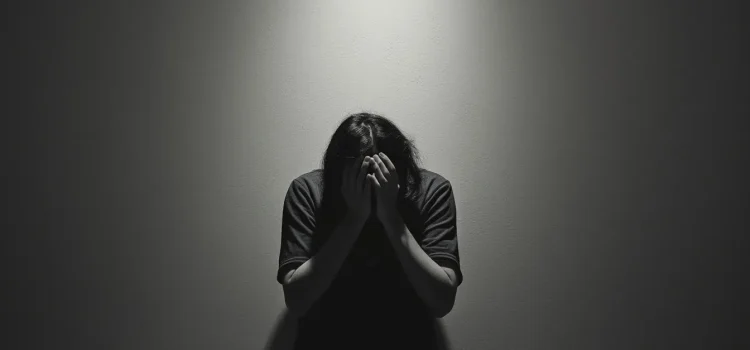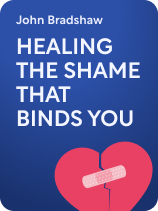

This article is an excerpt from the Shortform book guide to "Healing the Shame that Binds You" by John Bradshaw. Shortform has the world's best summaries and analyses of books you should be reading.
Like this article? Sign up for a free trial here.
What is toxic shame? How is it different from healthy shame? How do childhood experiences shape our relationship with shame?
John Bradshaw’s exploration of shame reveals the complex nature of this emotion, distinguishing between its healthy and destructive forms. His insights help us recognize how early experiences with caregivers influence our ability to process shame throughout life.
Keep reading to understand shame in general and toxic shame in particular.
John Bradshaw Defines Toxic Shame
What is toxic shame? Bradshaw uses this level of specificity because he believes not all shame is toxic. He explains that shame is a natural and healthy emotion—it teaches us our boundaries as humans and gives us insight into what’s right and wrong. Having healthy shame entails acknowledging our shame and what it’s trying to tell us, learning from the experience, and moving on. For example, you may feel shame if you find out you’ve given someone incorrect directions. This teaches you humility—to question the limits of your knowledge before directing others—so you can grow as a person and avoid the same mistake in the future.
(Shortform note: While Bradshaw argues that shame can be both good and bad, Brené Brown believes it’s strictly toxic. In Daring Greatly, Brown defines shame specifically as the fear of being inherently bad or unworthy. While feelings like guilt or embarrassment would be classified as healthy forms of shame according to Bradshaw, Brown argues that these emotions are distinctly different from shame. This is because guilt or embarrassment offer the opportunity for growth—you think, “I feel embarrassed so I won’t do that again.” For Brown, shame is different and always toxic, because it tells you “you’ll always do that because you’re just a bad person.”)
Our childhood experiences shape how we learn to process shame, writes Bradshaw—healthy caregivers teach us how to healthily process shame by forgiving our mistakes and dedicating time to lovingly teach us right from wrong. On the other hand, toxic caregivers teach us that our mistakes and sources of shame make us inherently bad or unworthy, and we learn to fear and internalize our shame rather than express it and learn from it.
(Shortform note: In Daring Greatly, Brown explains that parents should teach their children to engage with guilt rather than shame. Teaching guilt means teaching your child that their actions were bad—for example, perhaps they took more than their share and that means someone else can’t have any. Teaching shame means teaching your child that their actions make them bad—they took more than their share and that makes them selfish. While the former helps children understand consequences and correct their actions, the latter discourages them and teaches them that they’re flawed—an idea similar to Bradshaw’s concept of toxic shame.)
When we internalize our shame, Bradshaw says it becomes part of our identity and controls our thoughts, behaviors, and emotions in ways that make us destructive toward ourselves and others. This is when shame becomes toxic and ultimately prevents us from reaching true fulfillment and happiness in life.
(Shortform note: Brown reiterates in Daring Greatly that shame prevents us from achieving happiness in life because of the control it has over us. She specifies that shame takes over our more rational prefrontal cortex and puts us into fight or flight mode. This prevents us from being able to think critically or accurately identify the legitimacy of threats, causing us to overreact. This also contributes to destructive behavior that prevents us from forming authentic, meaningful connections with ourselves and others.)
According to Bradshaw, there are three types of childhood experiences that cause toxic shame: toxic role models, abandonment, and imprinted shame experiences. Toxic shame forms when all three of these experiences are not only present but regularly reinforced during childhood—they’re part of your daily life growing up.

———End of Preview———
Like what you just read? Read the rest of the world's best book summary and analysis of John Bradshaw's "Healing the Shame that Binds You" at Shortform.
Here's what you'll find in our full Healing the Shame that Binds You summary:
- How toxic shame develops and manifests in your life
- Why it’s important to externalize shame that’s internalized
- How to find happiness after expelling shame






